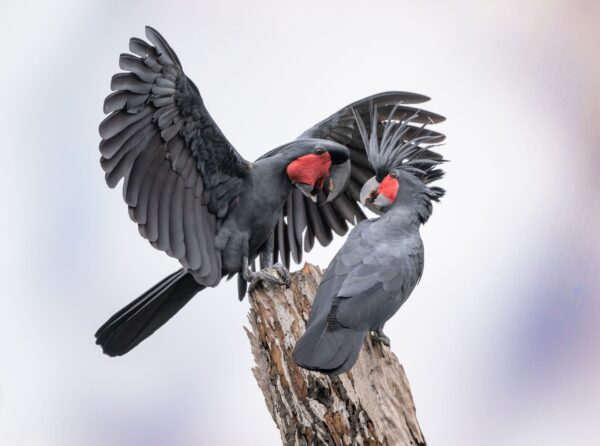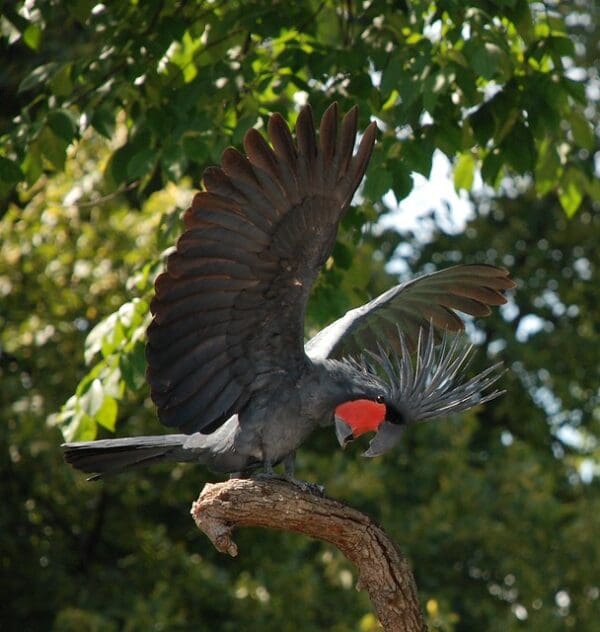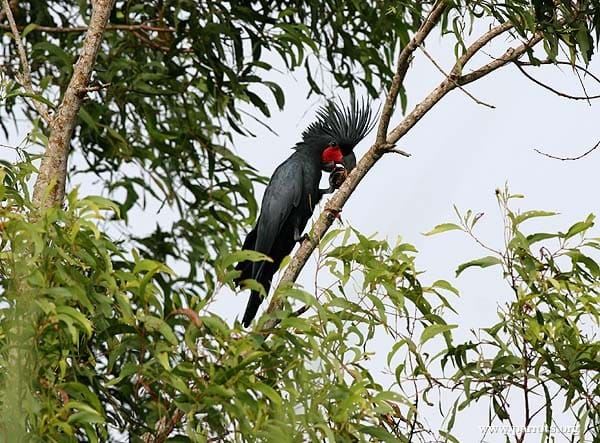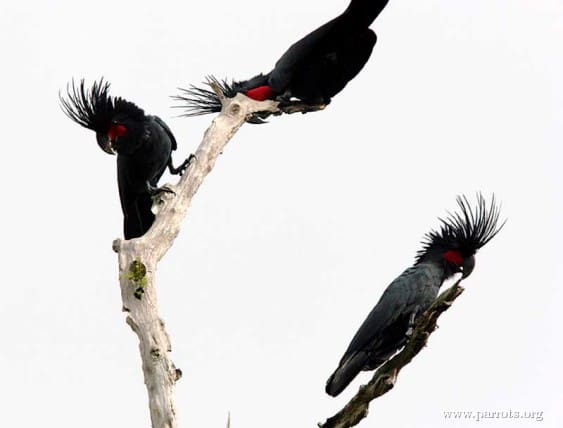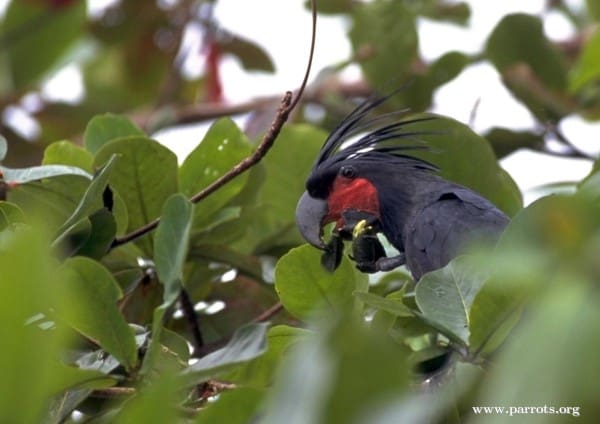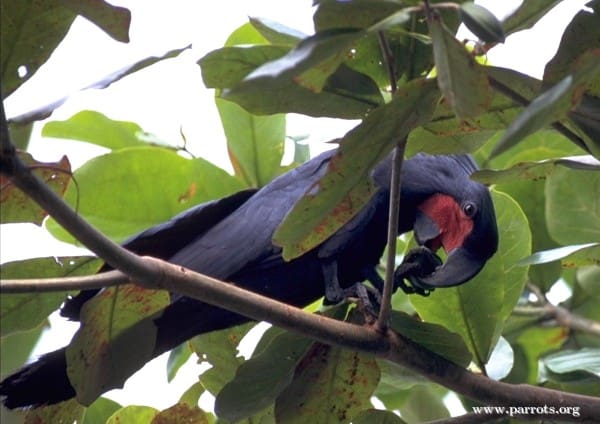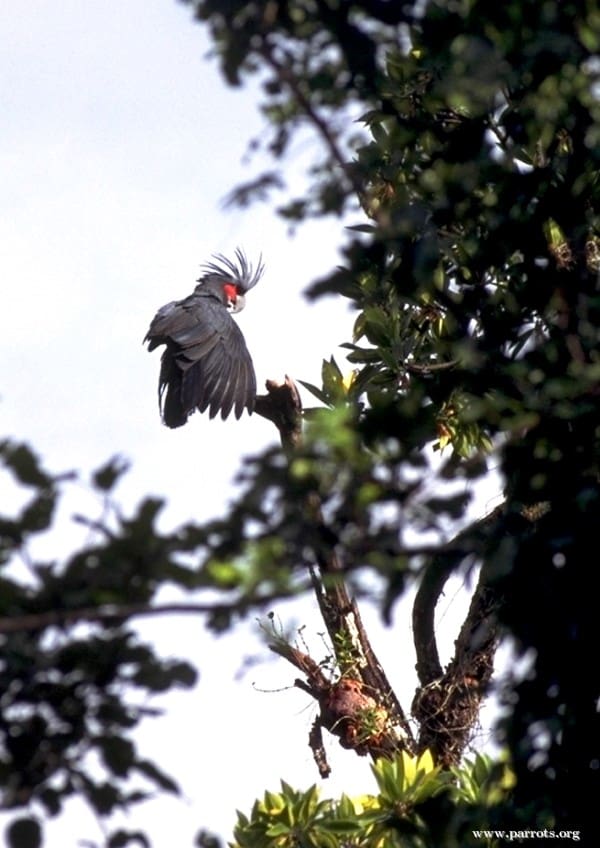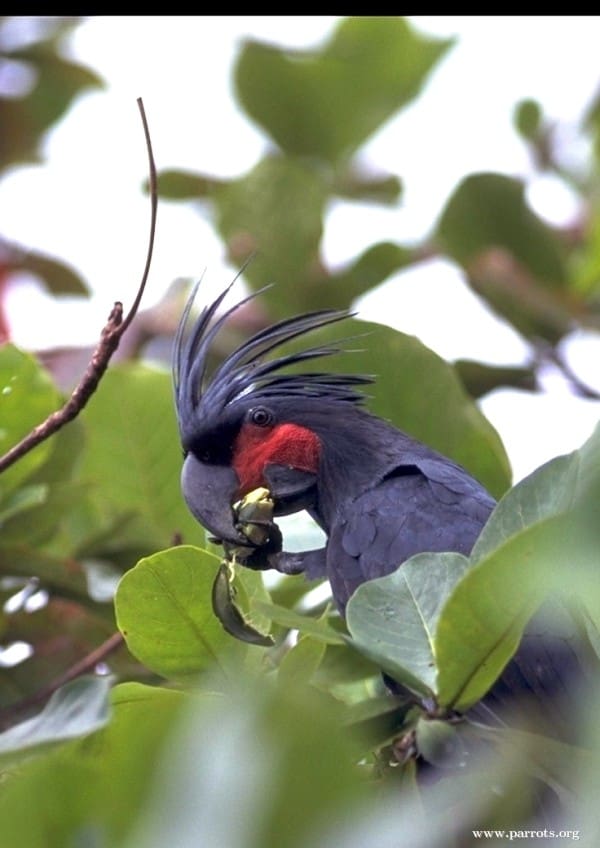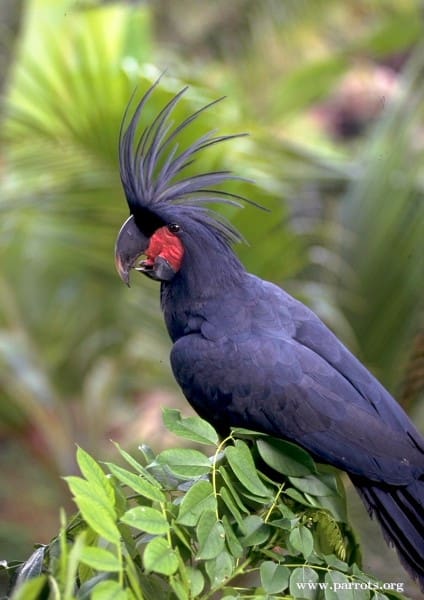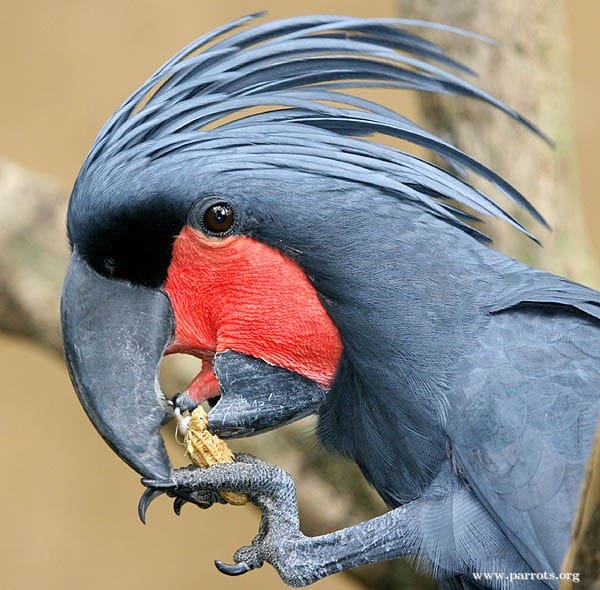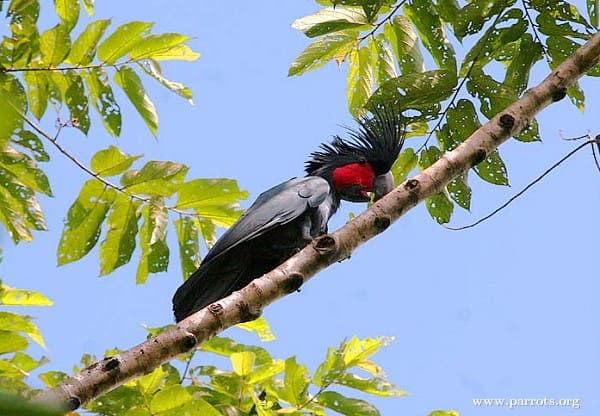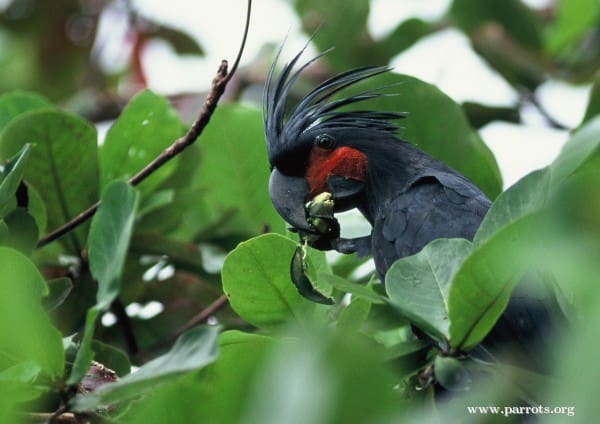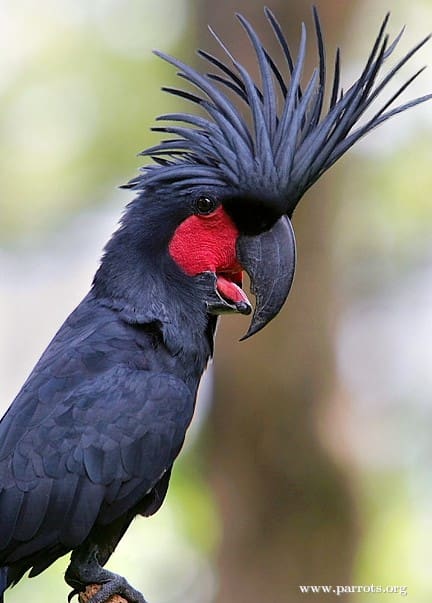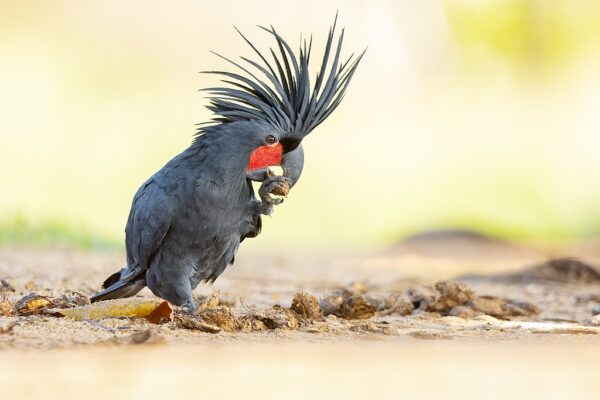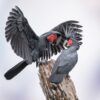
![© lil moe72 [CC BY-SA 2.0] via Flickr A wild Palm Cockatoo displays on a branch](https://parrots.org/wp-content/uploads/2023/01/wpt_Palm-Cockatoo_1082-38-100x100.jpg)
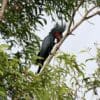
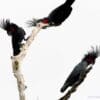

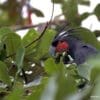

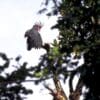
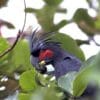
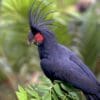
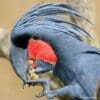

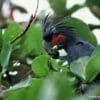
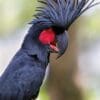
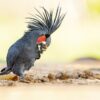
DID YOU KNOW?
The Palm Cockatoo is unique amongst cockatoos in that it builds a platform of twigs inside its nest cavity.

Probosciger

aterrimus
Size:
51-64 cm (20 in)
Weight:
910-1200 g (31.8-42 oz)
Subspecies including nominate:
four: P.a. aterrimus, P.a. goliath, P.a. stenolophus, P.a. macgillivrayi
Colour Adult:
P.a. aterrimus: Both adults in general black with powder from down giving a grey appearance; crimson bare cheek-patches and gape; thighs bare and blue/grey. Large black beak, smaller in female. Tongue red tipped with black. Eye ring grey, eye dark brown.
P.a. macgillivrayi: Both adults as in aterrimus but larger.
P.a. goliath: Both adults as in macgillivrayi but larger.
P.a. stenolophus: Both adults as in goliath but crest feathers much narrower.
Colour Juvenile:
As in adults but with pale yellow edging to feathers of underparts; shorter crest. Smaller beak tipped with white. Eye ring white.
Call:
Vocal bird with many calls. Higher pitched than Sulphur-crested Cockatoo. The most frequent call is a wavering whistle. Some calls are raucous and loud.
More Information:
Content Sources:
CITES
Avibase
BirdLife International
Cornell Lab of Ornithology/Birds of the World
A Guide to Parrots of the World, Juniper and Parr, 1998
Parrots of the World, Forshaw and Cooper, 1989. 2010 edition
Parrots of the World, Forshaw, 2006.
Parrots in Aviculture, Low, 1992.
Parrots: Their Care and Breeding, Low, 1986.
Captive Status:
Uncommon
Longevity:
40-60 yrs
Housing:
Walk-in aviary, minimum length 7 m (23 ft).
Diet:
Nuts, including walnuts, almonds and pine nuts; sunflower seed, wheat, maize and fresh corn; green leaves and fruit (except orange) are not eaten by many birds; nutritionally complete kibble.
Enrichment:
Bird-safe chewables (wood, sterilized pine cones), fir boughs, ladders, large link chains (durable plastic) swings, bathing.
Nest Box Size:
1.5 m (5 ft) high and 38 cm (15 in) in diameter (log).
Clutch Size:
one
Fledging Age:
80 days
Hatch Weight:
—
Peak Weight:
—
Weaning Weight:
—
World Population:
260,000–640,000 mature individuals; subspecies macgillivrayi is believed to have a stable population of about 3000 individuals. Decreasing.
IUCN Red List Status:
Near Threatened
CITES Listing:
Appendix I
Threat Summary:
Not globally threatened. This species is inferred to be in decline across its range. Although it represents only a small portion of the global population, the most robust data are available from Australia, demonstrating the species is likely to be in severe decline. The principal causes of these declines are clearing for bauxite mining, a changing fire regime, competition with Sulphur-crested Cockatoos Cacatua galerita and increasing storm severity/frequency. In New Guinea, where >95% of the world population resides, the chief threats are habitat and nest cavity loss and trapping for the pet trade. Habitat loss accelerated from 2014 to 14% over three generations and could accelerate further. Both local and international trade of this species has been documented. The species breeds extremely slowly, producing only a single egg in any clutch. Consequently, even low rates of trapping are likely to have a substantial impact, especially if mature breeding adults are targeted. Evaluating the available data, the species is suspected to decline by 20–29% in the next three generations.
Range:
P.a. aterrimus: Misool, in W Papuan Islands and Aru Islands, Indonesia.
P.a. macgillivrayi: S New Guinea between Fly and Balim Rivers, and Cape York Peninsula, N Queensland, Australia, south on east coast to Princess Charlotte Bay and on west coast to Edward River
P.a. goliath: W Papuan Islands, except Misool, Indonesia, and C New Guinea from Vogelkop, West Papua east to SE Papua New Guinea.
P.a. stenolophus: Japen Island in Geelvink Bay, West Papua, and N New Guinea from Mamberamo River east to Collingwood Bay, SE Papua New Guinea.
Habitat:
Lowland; in New Guinea found in rainforest, forest edge, monsoon woodland, tall secondary growth. Up to 1350 m (4428 ft).
Wild Diet:
Diet includes a wide variety of seeds, nuts, fruits, berries and leaf buds. Pandanus palm nuts, Castanospermum australe, and seeds of Terminalia kaernbachii and Canarium all favoured.
Ecology and Behaviour:
Conspicuous, lordly in behaviour. Travel singly or in pairs, or in parties of five or six. Calling begins at sunrise. Males display intensely in their territorial behaviour.
Clutch and Egg Size:
1 elliptical egg, 50.0 x 37.0 mm (2 x 1.4 in).
Breeding Season:
July-March; nest is in high hollow in trunk of living or dead tree.
